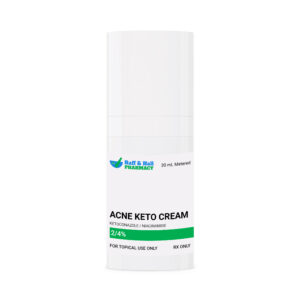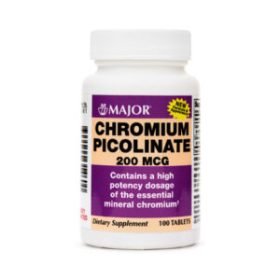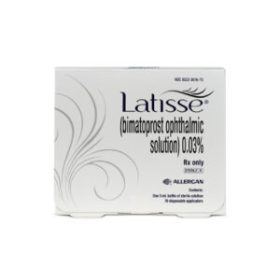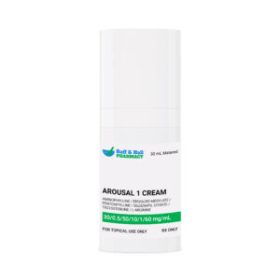This product is available solely through our 503A Compounding Pharmacy, ensuring personalized care and precision in every order. Please note that a valid prescription is required for purchase. If you do not have an account, please contact us.
Acne Keto Cream (Ketoconazole / Niacinamide) (30 mL)
Understanding Ketoconazole and Niacinamide: Uses, Safety, and Background
Ketoconazole and niacinamide (a form of vitamin B3) are two very different substances used for different health purposes—but both have important medical uses and safety considerations.
Ketoconazole: A Powerful Antifungal With Serious Risks (When Taken Orally)
The oral form is rarely used today because it can cause serious side effects, including liver damage (hepatotoxicity), adrenal suppression, and dangerous drug interactions. Due to these risks, doctors reserve oral ketoconazole for treating very serious fungal infections—such as blastomycosis, histoplasmosis, and coccidioidomycosis—only when no safer treatment options are available.
However, topical ketoconazole is much safer and commonly used for skin infections like athlete’s foot (tinea pedis), jock itch (tinea cruris), ringworm (tinea corporis), yeast infections on the skin, seborrheic dermatitis, and even dandruff. Because the medication is applied to the skin and absorbed in very small amounts, side effects are usually mild, limited to skin irritation or rash in some users.
Ketoconazole has been in use since 1981 and is still considered very effective for treating fungal infections when used correctly, especially in its topical form.
Niacinamide (Vitamin B3): Essential Nutrient With Diverse Roles
It can be found in many everyday foods like meat, green vegetables, mushrooms, peanuts, and whole grains. Interestingly, the body can also make niacin from an amino acid called tryptophan, which is found in foods like eggs. About half of our niacin needs come from this conversion process, but the body also relies on other B vitamins (like B6 and riboflavin) to make it happen.
Understanding Ketoconazole and Niacinamide: How They Work and Why They Matter
Ketoconazole: More Than Just an Antifungal
To understand how it works, think of the fungal cell membrane like a balloon filled with water. Ketoconazole interferes with a substance called ergosterol (a key part of that balloon), causing the membrane to become leaky and the contents to spill out—eventually killing the fungus.
It does this by blocking an enzyme called 14-alpha demethylase, which is essential for making ergosterol. Interestingly, other antifungals like amphotericin B work differently—they bind to ergosterol after it’s made.
Ketoconazole doesn’t significantly affect human cholesterol production, even though it works on a similar pathway in fungi. However, at higher doses, ketoconazole can also interfere with human hormone production, including testosterone, cortisol, and aldosterone. This effect has led to its use in conditions like advanced prostate cancer and Cushing’s syndrome (a disorder caused by too much cortisol).
In fact, ketoconazole blocks several steps in the body’s steroid hormone production pathway, making it similar to other drugs like metyrapone. Additionally, it has shown promise in reducing inflammation and preventing lung complications in critically ill patients, although this use is less common.
Despite these uses, ketoconazole’s potential for serious side effects, particularly with oral use (like liver damage), means it’s mostly used topically—on the skin—for safer, more targeted treatment of fungal issues like dandruff, athlete’s foot, or ringworm.
Niacinamide: A Vital Nutrient with Complex Roles
Niacinamide, also known as nicotinamide, is a form of vitamin B3, an essential nutrient your body needs every day. It plays a key role in energy production, helping your cells convert food (carbs, fats, proteins) into energy using special molecules called NAD and NADP. These molecules are involved in over 200 metabolic reactions throughout the body.
Your body can get vitamin B3 from food—like meat, beans, peanuts, and whole grains—or it can make it from another nutrient called tryptophan, found in protein-rich foods.
Niacinamide is often confused with nicotinic acid, another form of vitamin B3. While both forms serve as vitamins, they have very different effects when used as medicines. Nicotinic acid, unlike niacinamide, causes flushing (a warm, red feeling in the face and chest) and is used to treat high cholesterol. It helps reduce LDL (“bad”) cholesterol and triglycerides, and raise HDL (“good”) cholesterol—but this comes with side effects like flushing, stomach upset, and, at high doses, possible liver issues.
Niacinamide, on the other hand, does not cause flushing and does not lower cholesterol, but it’s widely used in supplements and skincare products due to its role in cell repair and inflammation reduction.
In short, while niacinamide supports general health, nicotinic acid is used more like a drug—especially in people with heart or cholesterol problems. Both are vital, but their functions and uses are quite distinct.
Understanding Ketoconazole and Niacinamide: Safety, Risks, and Clinical Use
Ketoconazole – An Antifungal with Serious Precautions
However, oral ketoconazole is not a first-line treatment anymore due to its serious risks and potentially dangerous drug interactions.
When taken by mouth, ketoconazole can strongly block an important liver enzyme called CYP3A4, which is responsible for breaking down many common medications. This can lead to very high levels of other drugs in the body, increasing the risk of serious heart rhythm issues such as QT prolongation and torsades de pointes, a potentially life-threatening condition. For this reason, oral ketoconazole is only used when no safer antifungal options are available.
Patients with heart conditions, electrolyte imbalances, or who take certain other medications are at especially high risk. Older adults, those with liver disease, and people with diabetes or thyroid problems are also more vulnerable to ketoconazole’s side effects.
Another concern is adrenal insufficiency. At high doses (400 mg/day or more), ketoconazole can interfere with the body’s ability to produce stress hormones like cortisol. This is a unique risk among antifungals, so adrenal function should be monitored during treatment, especially in people under physical stress (like surgery or critical illness).
People allergic to azole antifungals (like fluconazole or itraconazole) should avoid ketoconazole. Hypersensitivity, including serious allergic reactions, has occurred in rare cases.
Topical ketoconazole (creams, shampoos, foams) is much safer and widely used for skin conditions. However, care should be taken to avoid eye contact, and products like foams and gels should be kept away from flames due to flammable ingredients.
In older adults in long-term care settings, the use of oral ketoconazole is highly restricted under federal guidelines (OBRA) due to these safety concerns. It’s also not recommended in young children, especially under 2 years of age, as safety data is lacking.
Niacinamide (Niacin) – A Vital Vitamin with Drug-Like Effects
Niacin, also known as vitamin B3, comes in two forms: niacinamide (nicotinamide) and nicotinic acid. Both forms support basic body functions like energy production and cell repair. However, in high doses, especially for lowering cholesterol, niacin acts more like a drug—with risks to be aware of.
Niacin can also drop phosphorus levels, interfere with blood clotting, and interact with medications like blood thinners, diabetes drugs, or BP medications. In people with diabetes, it can make blood sugar harder to control and may cause false results on some urine glucose tests.
During pregnancy, niacin is safe at nutritional doses (RDA), but high doses should only be used if the benefits outweigh the risks. In breastfeeding, high-dose niacin is not recommended because it may pass into breast milk and affect the infant.
For children, niacin is safe for treating vitamin deficiencies, but its use in cholesterol treatment is limited and should only be done under expert supervision.
Ketoconazole and Niacin: Understanding the Side Effects and Safety Risks
Ketoconazole – More Than Just an Antifungal
Ketoconazole, especially in its oral form, is effective against fungal infections but is associated with a range of potentially serious side effects. Common side effects include nausea and vomiting in about 3% of patients, often improved when taken with food. Less commonly, it may cause abdominal pain, diarrhea, or headaches.
More serious concerns involve hormonal effects. Ketoconazole can lower testosterone levels, leading to gynecomastia (breast enlargement in men), erectile dysfunction, and, at higher doses, reduced sperm count. It can also suppress cortisol production, which may result in adrenal insufficiency—a condition where the body struggles to handle stress.
Rare but severe allergic reactions have been reported, including anaphylaxis, angioedema, and hives. Other side effects include dizziness, drowsiness, photophobia (light sensitivity), and in some cases, psychiatric symptoms like depression and suicidal thoughts.
Topical formulations of ketoconazole (creams, gels, shampoos, foams) are generally safer but can cause skin irritation, itching, dryness, rash, and burning sensations. Hair changes, such as discoloration or texture alterations, have also been reported with shampoo use.
Importantly, oral ketoconazole can affect heart rhythm, leading to QT prolongation, a serious condition that can trigger life-threatening arrhythmias. It also interferes with vitamin D metabolism, which could result in deficiency, and may rarely cause symptoms like facial swelling, paresthesias, or even signs of increased brain pressure.
Given these risks, oral ketoconazole is typically reserved for severe fungal infections where no safer options exist. Topical products remain widely used but still require care, especially to avoid eye contact and potential flammability.
Niacin (Nicotinic Acid/Niacinamide) – A Vitamin with Drug-Like Effects
Niacin, or vitamin B3, is essential in small amounts but has a complex side effect profile when used in high doses—especially for managing cholesterol.
The most well-known reaction is flushing—a sudden redness, warmth, or burning of the face and chest caused by blood vessel dilation. This affects over half of patients taking therapeutic doses, particularly with immediate-release niacin.
Other cardiovascular effects may include low blood pressure, dizziness, fast heartbeat, and even atrial fibrillation. Rarely, severe allergic reactions such as anaphylaxis or angioedema can occur.
Ketoconazole
No sufficient and well-controlled investigations of ketoconazole usage during human pregnancy exist to assess for a medicine-associated risk of significant birth abnormalities, miscarriage, or Use ketoconazole in pregnant women only if the possible benefit outweighs the possible fetal risk; instructions discourage Beginning oral azole antifungals including ketoconazole during pregnancy and to stop them
HIV-positive women who become pregnant agents. Animals given oral ketoconazole doses at 10 times the maximum recommended human dose showed embryotoxic and teratogenic effects (syndactylia and oligodactylia). Based on body surface area calculations, dystocia was also found in animals given oral ketoconazole at doses about one-fourth the maximum human dose in the third trimester of pregnancy.
Niacinamide
As niacin is an essential vitamin, consuming it during pregnancy in quantities equal to the recommended daily allowance (RDA) should be safe. Niacin is classified as pregnancy category A under these circumstances. Used in doses above the RDA for dyslipidemia or given parenterally for pellagra treatment, niacin is categorized as pregnancy category C. Most producers caution against consuming niacin in pregnancy in excess of the RDA. Because no toxicological studies have been conducted, the advantages and drawbacks of high-portion niacin therapy should be weighed.
Ketoconazole
Breast milk excretes systemic ketoconazole. Ketoconazole milk levels of 0.22 mcg/mL (peak) were seen 3.25 in a case study of a mother given 200 mg PO once every ten days. Assuming a milk intake of 150 mL/kg/day, the daily ketoconazole dose of an exclusively breastfed baby was determined to be 0.4 percent of the mother’s weight-adjusted dosage or 0.01 mg/kg/day. No data exist on how ketoconazole affects milk production or the nursing baby. The manufacturer advises mothers avoid breastfeeding their babies undergoing oral therapy; past American Academy of Pediatrics (AAP) advice, however, regarded ketoconazole as compatible with breastfeeding. Ketoconazole levels in plasma after topical administration are low; hence, amounts in human breast milk are likely to be small.
Store this medication in its original container at 68°F to 77°F (20°C to 25°C) and away from heat, moisture and light. Keep all medicine out of the reach of children. Throw away any unused medicine after the beyond use date. Do not flush unused medications or pour down a sink or drain.
- Ketoconazole tablets package insert. Morgantown, WV: Mylan Pharmaceuticals, Inc.; 2017 Sept.
- Nizoral (ketoconazole shampoo) package insert. Titusville, NJ: Janssen Pharmaceuticals, Inc.; 2017 Dec.
- Nizoral (ketoconazole) package insert. Titusville, NJ: Janssen Pharmaceutica Products, L.P.; 2006 Aug.
- Food and Drug Administration MedWatch. FDA Drug Safety Communication: FDA limits usage of Nizoral (ketoconazole) oral tablets due to potentially fatal liver injury and risk of drug interactions and adrenal gland problems. Retrieved July 26th, 2013. Available on the World Wide Web https://www.fda.gov/Drugs/DrugSafety/ucm362415.htm– LinkOpens in New Tab
- Food and Drug Administration MedWatch. FDA Drug Safety Communication: FDA warns that prescribing of Nizoral (ketoconazole) oral tablets for unapproved uses including skin and nail infections continues; linked to patient death. Retrieved May 19th, 2016. Available on the World Wide Web https://www.fda.gov/Safety/MedWatch/SafetyInformation/SafetyAlertsforHumanMedicalProducts/ucm502073.ht–
LinkOpens in New Tab - Niaspan (niacin extended-release) tablet package insert. North Chicago, IL: Abbott Laboratories; 2015 Apr.
- HPS2-THRIVE Collaborative Group. Effects of extended-release niacin with laropiprant in high-risk patients. N Engl J Med 2014;371:203-12.
- Taylor AJ, Villines TC, Stanck EJ, et al. Extended-release niacin or ezetimibe and carotid intima-media thickness. N Engl J Med 2009. Epub ahead of print, doi:10.1056/NEJMoa907569.
- Lee JMS, Robson MD, Yu LM, et al. Effects of high-dose modified-release nicotinic acid on atherosclerosis and vascular function: A randomized, placebo-controlled, magnetic resonance imaging study. J Am Coll Cardiol 2009;54:1787—94.
- McKenney JM, et al. A comparison of the efficacy and toxic effects of sustained- vs immediate-release niacin in hypercholesterolemic patients. JAMA 1994;271:672-7.
- Como JA, Dismukes WE. Oral azole drugs as systemic antifungal therapy. N Engl J Med 1994;330:263-72.
- Borgers M. Mechanism of action of antifungal drugs, with special reference to the imidazole derivatives. Rev Inf Dis. 1980;2:520-34.
- Sonino N. The use of ketoconazole as an inhibitor of steroid production. N Engl J Med 1987;317:812-8.
- Pont A, Williams PL, Loose DS, et al. Ketoconazole blocks adrenal steroid synthesis. Ann Intern Med 1982;97:370-2.
- Trachtenberg J, Pont A. Ketoconazole therapy for advanced prostate cancer. Lancet 1984;433-5.
- Roden, DM. Drug-induced prolongation of the QT interval. New Engl J Med 2004;350:1013-22.
- Crouch MA, Limon L, Cassano AT. Clinical relevance and management of drug-related QT interval prolongation. Pharmacotherapy 2003;23:881-908.
- Benoit SR, Mendelsohn AB, Nourjah P, et al. Risk factors for prolonged QTc among US adults: Third National Health and Nutrition Examination Survey. Eur J Cardiovasc Prev Rehabil 2005;12(4):363-368.
- Koide T, Ozeki K, Kaihara S, et al. Etiology of QT prolongation and T wave changes in chronic alcoholism. Jpn Heart J 1981;22:151-166.
- van Noord C, Eijgelsheim M, Stricker BH. Drug- and non-drug-associated QT interval prolongation. Br J Clin Pharmacol 2010;70(1):16-23.
- Galli-Tsinopoulou A, Chatzidimitriou A, Kyrgios I, et al. Children and adolescents with type 1 diabetes mellitus have a sixfold greater risk for prolonged QTc interval. J Pediatr Endocrinol Metab 2014;27:237-243.
- Health Care Financing Administration. Interpretive Guidelines for Long-term Care Facilities. Title 42 CFR 483.25(l) F329: Unnecessary Drugs. Revised 2015.
- Ketoconazole cream package insert. Suwanee, GA: Tiber Laboratories; 2010 Apr.
- Extina (ketoconazole foam) package insert. Morgontown, WV: Mylan Pharmaceuticals, Inc.; 2018 Jun.
- Xolegel (ketoconazole gel) package insert. Exton, PA: Almirall, LLC; 2019 Dec.
- Colletti RB, Neufeld EJ, Roff NK, et al. Niacin treatment of hypercholesterolemia in children. Pediatrics 1993;92:78-82.
- Expert Panel: National Cholesterol Education Program. Report of the expert panel on blood cholesterol levels in children and adolescents. Pediatrics 1992;89(suppl 2):525-84.
- Niacinamide. In: Drugs in Pregnancy and Lactation. A Reference Guide to Fetal and Neonatal Risk. Briggs GG, Freeman RK, Yaffe SJ, (eds.) 7th ed., Philadelphia PA: Lippincott Williams and Wilkins; 2005:1140-1
- US Public Health Service (USPHS) and the Infectious Diseases Society of America (IDSA). The Living Document: Guidelines for the Preventing Opportunistic Infections Among HIV-Infected Persons. Retrieved November 28, 2001. Available on the World Wide Web at www.aidsinfo.nih.gov.
- American Academy of Pediatrics (AAP) Committee on Drugs. Transfer of drugs and other chemicals into human milk. Pediatrics 2001;108(3):776-789.
- Moretti ME, Ito S, Koren G. Disposition of maternal ketoconazole in breast milk. Am J Obstet Gynecol. 1995;173:1625-1626.
- Xolegel (ketoconazole gel) package insert. Exton, PA: Almirall, LLC; 2019 Dec.
- Niacor (Niacin tablets) package insert. Minneapolis, MN: Upsher-Smith Laboratories, Inc.; 2000 Feb.





